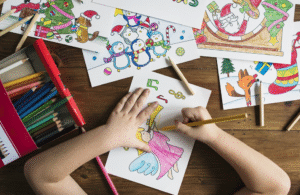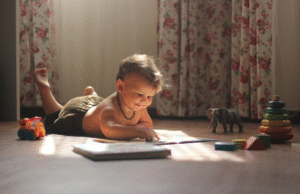No parent ever wants to hear that their child is being bullied. The very thought evokes a mix of helplessness, anger, fear, and guilt. But bullying is a harsh reality affecting millions of children-and if not addressed early, it can impact a child’s mental health, school performance, and lifelong confidence.
This guide is designed not just to inform, but to equip you as a parent with actionable strategies to respond with calm, clarity, and strength. It goes beyond surface-level advice and dives into what truly helps your child heal, recover, and rebuild confidence in both themselves and the world around them.
Understanding Bullying in 2025: It’s More Complex Than Ever
Bullying has evolved. It’s no longer limited to playground shoves or classroom insults. Today’s children face an extended form of bullying across multiple environments—in person, online, and even indirectly.
The Four Modern Forms of Bullying:
- Physical Bullying – Hitting, kicking, pushing, or any physical aggression.
- Verbal Bullying – Name-calling, threats, or hurtful teasing.
- Social/Relational Bullying – Intentional exclusion, rumors, group manipulation.
- Cyberbullying – Online harassment via social media, gaming, group chats, or texts.
According to a report by StopBullying.gov, cyberbullying is now the fastest-growing form of peer aggression-and it often continues outside school hours, creating a 24/7 cycle of stress for the victim.

Step 1: Identify the Red Flags Early
Children rarely announce they’re being bullied. Instead, they show it through subtle behavioral shifts or unexplained distress.
Warning Signs Include:
- Changes in eating or sleeping habits
- Refusal to attend school or use the internet
- Withdrawing from friends or family
- Drop in academic performance
- Sudden anxiety or panic before school
- Unexplained bruises or damaged belongings
- Self-critical language (“I’m stupid,” “Nobody likes me”)
Listen between the lines pay attention to what they don’t say out loud.
Step 2: Create a Judgment-Free Safe Space
Once your child opens up (even partially), your role is to listen-not to interrogate or react emotionally.
Your Approach Should Be:
- Calm – Don’t show panic or anger in front of them.
- Supportive – Validate their feelings: “That sounds incredibly hard.”
- Open-ended – Ask: “Can you tell me more about what happened?”
- Reassuring – “You did the right thing by telling me. You’re not alone.”
Children need to know they are believed, supported, and not blamed. The way you respond determines how deeply they’ll open up next time.
Step 3: Keep a Detailed Record of Every Incident
You’ll need to collect evidence before involving school authorities. This helps create accountability and shows you’re taking the issue seriously.
Record:
- Dates, times, and locations
- Names of people involved (bullies, bystanders, adults)
- Descriptions of events and emotional reactions
- Screenshots (in cases of cyberbullying)
Create a digital log or journal so you can maintain a timeline. This also empowers your child to feel like they’re reclaiming control.
Step 4: Approach the School Professionally, Not Emotionally
Instead of reacting in anger or demanding instant punishment, request a formal meeting with the right staff:
- Homeroom teacher
- Principal or vice principal
- School counselor or safeguarding officer
Key Questions to Ask:
- What is your bullying policy?
- How will this situation be addressed?
- What safety measures can be put in place for my child?
- What is the timeframe for follow-up?
Tip: Refer to this resource from the U.S. Department of Education for understanding your legal rights and the school’s responsibilities.
Keep a written record of every communication-email threads, meeting notes, and action steps.
Step 5: Teach Your Child Coping Strategies That Strengthen Confidence
While institutional intervention is essential, internal resilience is just as important. Children who feel empowered are less likely to become long-term victims.
Teach Them:
- Assertive Language: “I don’t like that. Stop now.”
- Calm Body Language: Shoulders back, steady tone.
- Peer Support: Encourage strong friendships-bullies often target isolated kids.
- Exit Strategies: “Who can you go to if this happens again?”
- Digital Boundaries: Teach them to block, report, and never respond to bullies online.
You’re not teaching them to fight back—you’re teaching them to stand tall.
Step 6: Monitor Digital Platforms Closely
Children often hide cyberbullying due to fear of losing device privileges. Reassure them that you’re there to protect—not punish.
Actions You Can Take:
- Check chat apps, school forums, and group messages
- Use parental control tools to monitor digital activity
- Report abusive accounts to platform moderators (Instagram, TikTok, Discord)
- Document all digital abuse with screenshots and timestamps
Cyberbullying should be reported not just to schools but also to your country’s cybercrime unit or local law enforcement, if it escalates.
Step 7: Seek Professional Counseling if Needed
Bullying can damage more than self-esteem it can alter how children see themselves and others. If you notice prolonged signs of depression, anxiety, self-isolation, or trauma, consult a licensed child therapist or school counselor.
Therapy Helps With:
- Restoring confidence
- Managing anxiety
- Processing fear and social withdrawal
- Rebuilding trust in relationships
Mental health support is not a luxury-it’s a critical investment in recovery.
Conclusion: Be Their Advocate, Be Their Anchor
No child should suffer silently. If your child is being bullied, you are not powerless-and they are not alone. The most powerful response a parent can give is not reactive rage, but deliberate protection backed by emotional presence and informed action.
Your child doesn’t just need a solution. They need you-to believe them, to walk with them, and to remind them of their worth when others try to tear it down.
You are their first line of defense—and their most important one.
Faqs
1. What are the most common signs that a child is being bullied?
Signs may include:
- Reluctance to go to school
- Unexplained physical injuries
- Lost or damaged belongings
- Changes in eating or sleeping habits
- Sudden drop in grades or interest in activities
- Emotional symptoms like anxiety, mood swings, or isolation
If you notice a combination of these behaviors, start a gentle, open-ended conversation to understand what’s going on.
2. How should I respond if my child tells me they’re being bullied?
Stay calm and listen without interrupting. Praise them for opening up, validate their feelings, and avoid blaming them or the bully right away. Reassure your child that they are not alone and that the situation can be addressed together—with care, support, and action.
3. Should I contact the school if my child is being bullied?
Yes. Report the bullying to a teacher, school counselor, or principal in writing, and ask for a meeting. Provide specific details if available. Most schools have anti-bullying policies in place, and it’s their responsibility to ensure a safe environment. Document all interactions and follow up regularly.
4. How can I help my child rebuild confidence after being bullied?
Support your child’s self-worth through:
- Encouragement and positive affirmations
- Involvement in hobbies or sports they enjoy
- Friendships outside school (clubs, community groups)
- Counseling or therapy if needed
Rebuilding confidence takes time—be patient, consistent, and remind them that what happened is not a reflection of their value.
5. What if the school doesn’t take action against the bullying?
If the school fails to address the issue, escalate your concerns:
- Write to the school district or educational board
- Document each incident and response
- Request written policies and insist on a safety plan
- If needed, consult legal or advocacy groups specializing in children’s rights and education
Your child’s emotional and physical safety should always come first.



